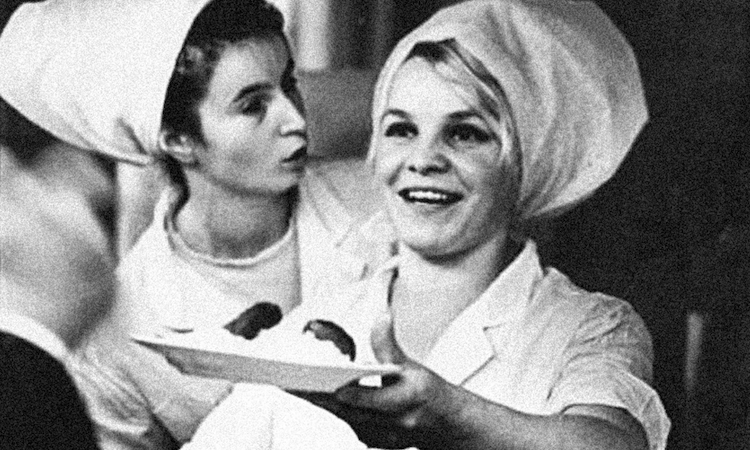There is absolutely nothing from which capitalism will not try to make a profit.
The care of vulnerable, homeless, abused and challenging children used to be in the charge of the state via local authorities. To a certain extent, that is still officially the case. However, being legally responsible for care is not the same as actually providing it, and, as cut has followed cut in recent decades, and local authority budgets have been squeezed to the bone, council-owned and staffed homes have disappeared.
Residential care provision for children in need of is nowadays in private hands and the service provided is obviously based (whatever written charters might be wave about) on the need for the care provider to make the maximum profit from his dealings with both the children to be ‘cared’ for and the local authority that pays him to provide said care.
By December 2019/January 2020, the situation within children’s care had got so bad that Anne Longfield, the then children’s commissioner, was calling on the Department for Education to address the “scandal” of “private firms making obscene profits” while providing care home places for vulnerable children.
Ms Longfield added that the quality of care that these companies provide was often very poor. As much as £1 million can be spent on an adolescent without in any way improving their life prospects. She pointed out: “The scandal here is not just the cost of these placements, but what children are getting for this money.”
With the onset of the pandemic, the situation developed to create a gold rush of Klondike proportions, however.
Covid offers profiteering bonanza with desperate councils and no oversight
Ofsted, the body charged with checking the suitability of homes and staff along with the safety and general wellbeing of the young residents, suspended all its routine inspections in mid-March at the request of the secretary of state. Over the next five-and-a-half months, it made on-site visits to only 29 homes at which there were known to be ‘urgent’ concerns.
It is reported that 175 new children’s homes were registered by the regulator during the first wave of the pandemic last year, mostly without a visit from Ofsted, and with all investigations and enquiries taking place online or by phone. When inspections resumed in April 2021, serious failings at almost a third of these homes were discovered, and at least five closed themselves down before Ofsted could visit.
An ongoing government-backed review led by former teacher Josh MacAlister has revealed that the homes in question have been guilty of using “unsafe restraint practices” or of putting children at risk of sexual or criminal exploitation.
The conditions at several ‘homes’ were found to be so horrifying that Ofsted inspectors blocked the owners from admitting any more children.
Many of these abuses in privatised ‘care’ homes were initially brought to public attention by Times and the Sunday Times, and credit is due to their investigation team for this valuable work. Still, as inveterate defenders of the present economic system, their naivity in ‘criticising’ the workings of that system are striking, as when Billy Kenber wrote: “The director of children’s services at one council said that smaller providers were increasingly being ‘swallowed up by larger conglomerates’ leading to a ‘gradual diminution of standards’.”
It must be admitted that, while cutting corners to increase profits is almost inevitable in such situations, takeovers by larger groups do not always lead to a diminution in standards. However, anyone who knows even a little about capitalism understands that there is an inherent movement towards monopoly in this sytem. It is an iron law that large conglomerates will swallow up smaller firms in order to gain economies of scale, in order to eliminate competition, and in order to set high monopoly prices.
As VI Lenin pointed out: “The transformation of competition into monopoly is one of the most important – if not the most important – phenomena of modern capitalist economy.” (Imperialism, the Highest Stage of Capitalism, 1916, Chapter 1)
The unnamed council officer cited above went on to add: “One of the concerns for us is whether they’re leveraged upon a level of future profits that is hard to see as being sustainable. It feels like we’re on the verge of market failure.” (Children in care: private equity swoops to exploit ‘broken market’ by Billy Kenber, 17 June 2021)
Times journalists and council officials alike seem surprised that the owners of these extremely lucrative children’s homes and care-provision contracts should want to keep expanding. But isn’t capitalism always in a state of driving itself to crisis in its mad search for higher and higher profits, no matter what the cost?
A case in point is the recent example of Southern Cross care homes for the elderly, whose owners borrowed and borrowed to keep expanding until their bubble burst with a cruel bang for residents and staff alike in 2011.
During the initial period of the pandemic, when councils feared a massive increase in vulnerable children needing care, the fees paid by local authorities to private providers rose by 5 percent to an average of £4,100 per child per week. The cost of caring for children whose behaviour was termed as challenging – ie, who required more care and more intense staffing levels – rose to as much as £10,000 a week!
Both big companies (there are around six giants in the field who obtain most contracts) and small newcomers who have just seen a big market open up, are in need of new properties, since it is the care provider that provides the property. But there are very few purpose-built care homes, and so buildings that are used for the purpose come in all sizes and states of (dis)repair.
To cash in on cheaper property prices, new homes are disproportionately built in the north-west, which often means placing children hundreds of miles from the friends, family and surroundings they know.
Children’s care providers who wish to register a home must first give details of key staff, provide extensive policy documents, and demonstrate both their building’s suitability and their financial viability. They should also be visited by Ofsted – a condition that was lifted at the onset of the first lockdown last year.
It is now known that many of the new homes set up to meet extra demand were in unsuitable premises, using low-paid, overworked staff with little or no training. In many cases, staff were not much older than the residents and homes did not have an overall manager. Such places were fraught with danger for children and untrained staff alike.
The government’s review has noted that nearly a quarter of the 176 new children’s homes opened between 1 April and 31 August 2020 did not have any form of inspection report published. They were basically left to themselves, and local authorities pushed children into them because they had very little choice. The whole system, according to review chair Josh MacAlister was like a “tower of Jenga held together with Sellotape”.
The review has also revealed that in nearly 135,000 cases where a child was suspected of suffering significant harm, they were not put on a protection plan. This figure has risen threefold over the past decade, showing quite clearly that the current situation is not merely a blip caused by the pandemic but follows a clearly marked path over at least ten years towards total breakdown of the children’s care system.
Capitalism doesn’t care
The only guarantee for children in care today is that capitalism will find many cruel and degrading ways to make profits from their misery.
Andy Elvin, chief executive of the Adolescent and Children’s Trust, correctly pointed the finger at capitalism and those seeking short-term profits: “The majority of children’s homes now are owned by three or four private equity houses and they have a business model that’s based on bed nights … because you can charge … upwards of £5,000 a week from the point of view of the people at the top of the tree — the private equity analysts — if you can even get three or four weeks of that fee it was worth it.”
The report lists the names of individual children put at risk of great harm during the pandemic children’s care gold rush. Dame Rachel de Souza, the current children’s commissioner for England, said of the highlighted cases that they showed children and the system “being exploited for profit”, adding: “In some cases, they’re just downright dangerous. That has to stop.”
You can tell a lot about a society by the way it treats it most vulnerable members, and childen in care are a case in point. The inhuman and often horrific treatment meted out to these young people is a sure sign that capitalist society is not fit for purpose when it comes to the task of rearing happy, healthy children, able to take their place in society and to live useful, meaningful lives.
It is clear that while this system remains, the vast majority of our children, whether in care or living with their families, will continue to lack access to the community, cultural and educational facilities they need to develop into well-rounded, capable adults. And that vulnerable children in care will continue to be regarded on the one hand as entirely disposable (since they have no-one to speak up for them) and on the other as handy cash cows, whose problems are to be exploited for profit rather than addressed and resolved.
The one thing these children desperately need, love, is clearly not on offer at any price.
Ultimately, there can be no completely satisfactory solution for Britain’s most scarred and damaged children while the capitalist system remains. But until such time as a new society is able to transform their prospects entirely, we must demand that steps be taken to at least protect them from capitalism’s worst effects.
That must surely start with renationalising the care system in its entirety and ending the twisted reign of the profiteers.











